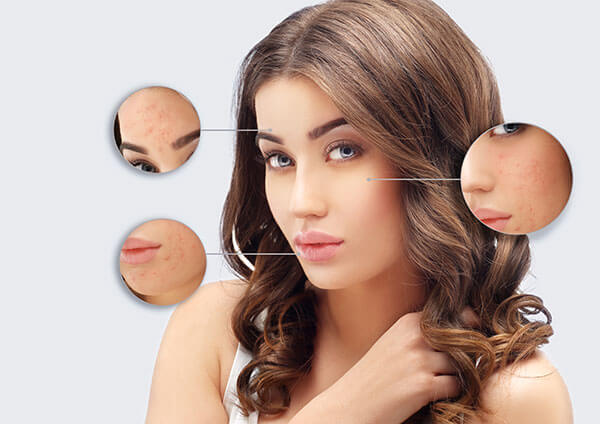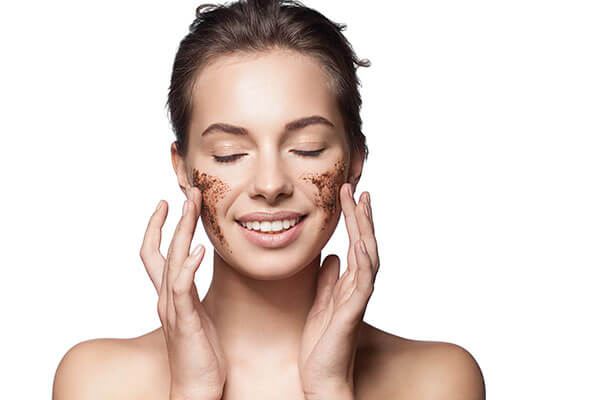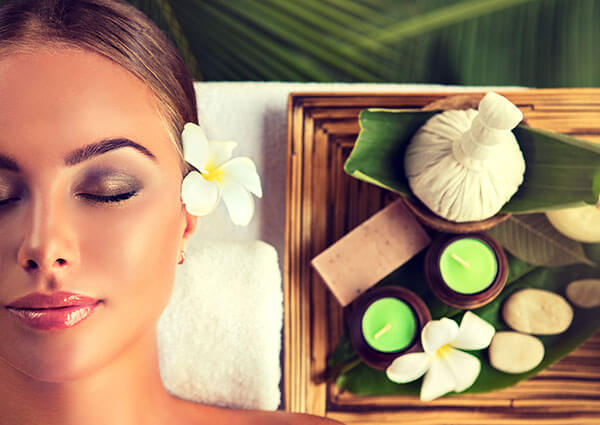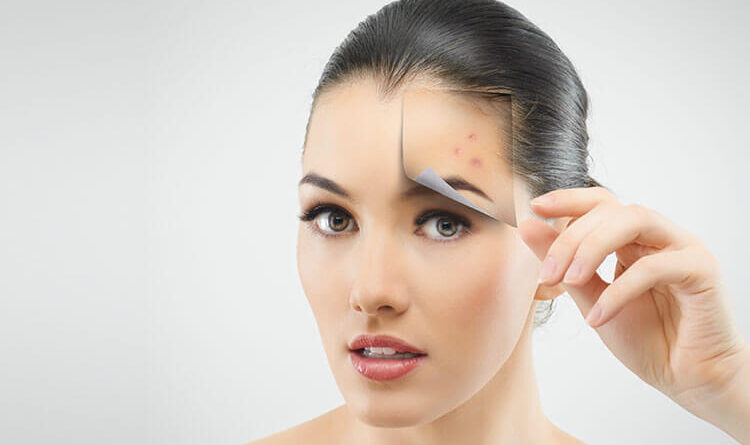We all know about the classic, very common and popular skin issue that is acne. However, some people do not have acne but instead, notice small bumps on their skin and face. What are these bumps and how to get rid of bumps on face? Find out in this article!
1. What Are Tiny Bumps On Face Not Acne?

You might notice tiny, hard, white bumps that show up on your face, especially around the eyes. Even if you try to pop or remove these like a pimple, they will not budge. Unlike acne, which is essentially inflamed pimples, these bumps are not painful and do not contain any pus. They also feel different, are rather firm, and do not react to squeezing. Unlike pimples and acne, they can also appear in places without active oil glands. The treatments, however, may be similar to dry skin acne treatment.
These small bumps on face, not pimples are very common and can happen to anyone, even children, and infants. Frustrating as they can be, these harmless bumps are typically stubborn and can last for a few weeks to months or longer.
There is also not just one type of small non-acne bumps on your face. Depending on the causes and the actual condition, there are of course various ways to treat them and using the wrong method can worsen the condition or damage your skin. The bumpy skin might even go away on its own without any treatment.
2. Different Types Of Bumps On The Face

Here are some examples of what these tiny, pearl-like bumps on your face could be, along with some ways on how to identify them and the underlying reasons that cause them.
a) Milia
Milia are small, hard, white bumps that appear around the mouth, eyes, cheeks, nose, and on the eyelids. I, myself have noticed these bumps on my face that are actually tiny cysts under the skin containing a build up of the protein keratin and dead skin cells. They may appear like small whiteheads or pimples, but you cannot pop them, and they are not red or sore.
Milia are very common babies and affects 50% of newborns because their skin is not yet used to exfoliation. However, they can appear on people of any age.
In adults, milia can be due to the following reasons:
- Under-exfoliation- Not incorporating an exfoliant in your skincare routine can cause dead skin cells to build up, clog pores, and cause bumps or blemishes.
- Use of heavy creams, moisturizers, and cleansers- These products form a thick layer on the skin, leading to the accumulation and confinement of dead skin cells on the skin’s surface.
- Sun damage- Extreme exposure to the UV radiation of the sun damages the skin, causing it to become thicker and more leathery in texture. This makes dead skin cells harder to remove, even if you are already exfoliating.
- Cleansing improperly or inadequately- If you fail to cleanse your skin thoroughly by removing makeup, impurities, dirt, and oil regularly, skin cells can build up and get trapped over time.
b) Keratosis Pilaris

Keratosis pilaris (KP) is a harmless and relatively common skin condition. It is sometimes called “chicken skin” because the small, hard bumps on the skin give it a rough texture and appearance, like sandpaper, actual chicken skin, or persistent goosebumps.
The bumps on the skin colored white or red appear on the thighs, upper arms, buttocks and rarely, on the face. While they are usually painless, they are sometimes accompanied by mild itching, swelling or redness. Children and teenagers usually get this condition, which typically goes away as they get older. According to Medscape, about 50% to 80% of all adolescents and 40% of adults experience KP.
KP is caused by:
- A buildup of keratin that forms plugs into the openings of hair follicles.
- Dry skin. Often, the condition worsens during the cold, dry winter months when humidity is low, and clear up as it gets warmer.
- Eczema or atopic dermatitis. This skin condition makes the skin more susceptible to dryness and developing KP.
- Chafing- KP bumps worsen due to irritation caused by chafing and friction from tight clothing.
- Genetics- KP is also hereditary, and you are more likely to get it if someone in your family, such as your parents, had it.
c) Allergic Reactions
Bumps caused by allergic reactions can also appear as small, hard bumps on the skin. When the skin reacts to allergens, the symptoms are often accompanied by irritation or itchiness that does not go away as fast as acne can. Bumpy facial skin due to allergies can also have some redness, flakiness, or scaly patches.
Bumps caused by allergic reactions can be due to:
- Allergies to a hair product, makeup, or skin care products.
- Intolerance, sensitivity, or allergies to certain food and drinks.
- Inflammation due to the body’s response to the encountered irritant or allergen.
- Sensitive skin that is prone to hives, psoriasis, or eczema.
3. 5 Most Effective Ways on How to Get Rid of Bumps on Face

These are five effective ways on how to get rid of tiny bumps on face quickly:
1) Double Cleansing
Double cleansing means exactly how it sounds. First, wash your face with a gentle face wash or cleanser to remove any makeup, oil, sebum, hair care product, sunscreen, dead cells, or pollutants from your skin that could be blocking your pores.
After that, wash again to remove deep-seated dirt, dead skin cells, and stubborn sebum buildup. Especially if you wear many layers of products and makeup, it is important to remove all these before actually cleansing your face. Do this at the end of the day before bed.
2) Proper Exfoliation

Proper exfoliation means gently exfoliating the skin to remove all the debris using a brush or some form of device, a cleanser-exfoliator combo, a physical exfoliator with exfoliating granules, or topical exfoliants that contain urea, alpha-hydroxy acid, lactic acid, or salicylic acid. Choose exfoliants with natural active ingredients and enzymes that effectively dissolve and remove dead skin. This also prevents clogged pores and enhances cell turnover.
However, do not over-exfoliate as this can exacerbate the problem. Avoid harsh exfoliants or cleansers that strip off the skin’s natural moisture and do not exfoliate every day. Two to three times a week is enough. Also, moisturize your skin adequately to prevent dryness.
3) Evaluate Your Food And Products
If your condition is due to allergic reactions or irritation, talk to your doctor or allergist to know which could be the cause. Avoid these products and food or drinks to maintain a clear skin. Choose products without fragrances formulated specifically for sensitive skin. Before using a product on your face or all over your body, do a patch test first.
4) Dermatological Procedures

Common options for bumps that won’t go away include dermatological procedures like:
- Dermaplanning
- Chemical peels
- Microdermabrasion
- Laser Treatment
- Deroofing or the use of a sterile needle to remove cysts
- Diathermy or the use of heat
- Destruction curettage (scraping and cauterizing cysts)
- Cryotherapy
5) Dietary Adjustments
Your diet also determines your skin’s health and condition. If you’re looking for ways on how to get rid of tiny bumps on forehead, changing your diet could change a lot. So, eat plenty of green leafy vegetables and fruits. Switch to grass-fed meats which have more balanced omega 3 and 6 fatty acids. Take quality fish oil supplements. Go for healthier alternatives like whole grain bread instead of refined carbohydrates and honey or stevia instead of sugar.
Tiny bumps on your face that are not acne could be milia, keratosis pilaris, or allergic reactions. Some ways on how to prevent and how to get rid of bumps on face include double washing, exfoliating properly, evaluating your food and products, undergoing dermatological procedures, and modifying your diet.
Make sure to consult your doctor or dermatologist if these bumps persist for longer than a few months.
“Hope you find the post helpful and we are excited to hear what you think of it!”






